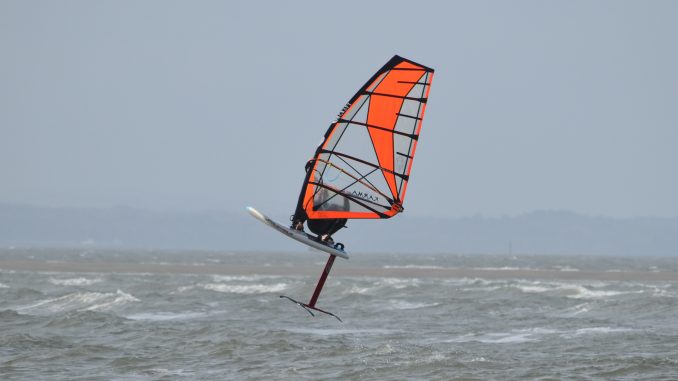
Words: Romain Jourdan
Pics: James Jagger, Oli Lane-Peirce.
Foiling is fun and addictive, creating amazing sensations of freedom whilst flying silently above the water. Everyone that has tried foiling has only positive things to say about it. Are you tempted to try windfoiling and be able to fly above the water with just 7-10 knots of wind? If so, come join the growing windfoiling community and follow the guide!
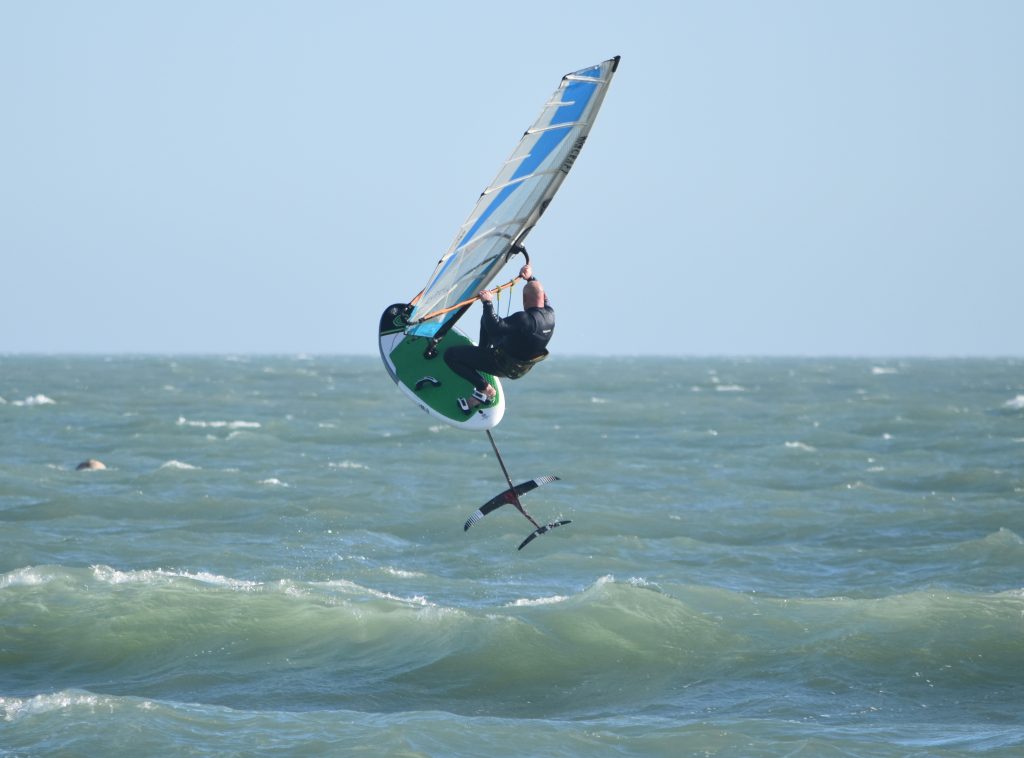
I know perfectly well how frustrating it is to try to find relevant content about windfoiling on the Internet. It takes a lot of energy and patience to sift through online resources and eventually dig up some information about windfoiling. Fortunately, you don’t need to do that anymore! Instead we created a new website, www.windfoilzone.com, which finally gathers all the resources and information available about windfoiling in one, convenient place.
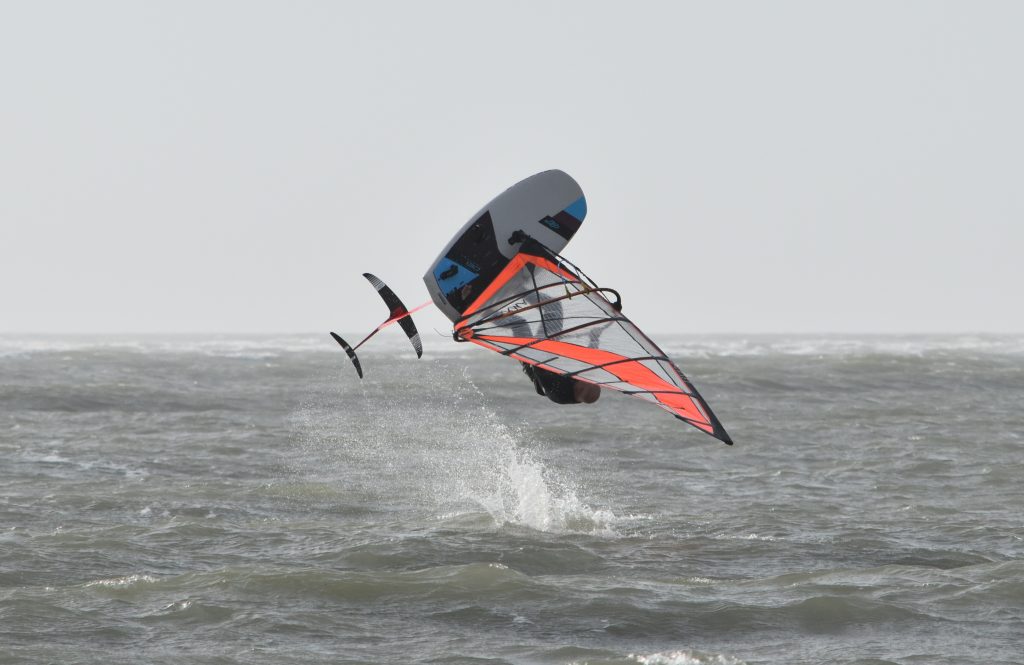
Here we’ll give you a rundown of everything that we’ve discovered throughout our own flying experience, which came also from many interviews with industry professionals, and a ridiculous amount of time gathering all relevant information related to foiling. At last we have it all in one place – we did the digging for you, and I hope it will get flying quicker by learning the basics.
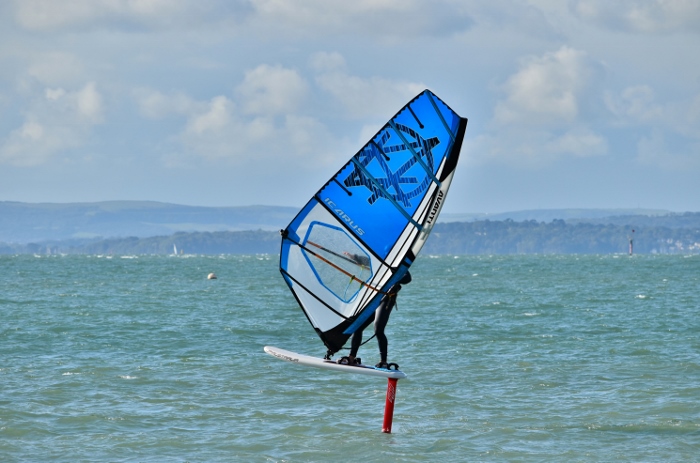
WINDFOILING: THE FUTURE OF LIGHT WIND WINDSURFING?
Windfoiling is on everybody’s lips nowadays. It is still too early to say if it’s a true windsurfing revolution, as funboarding was in the 90’s, but it’s definitely the big trend of 2017. Plus, after your first high (on the foil), you’ll be hooked! I believe that this is more than a fad, but probably a whole new level of windsurfing, and what will become the norm for windsurfing under 20 knots.
FREQUENTLY ASKED QUESTIONS ABOUT FOIL WINDSURFING
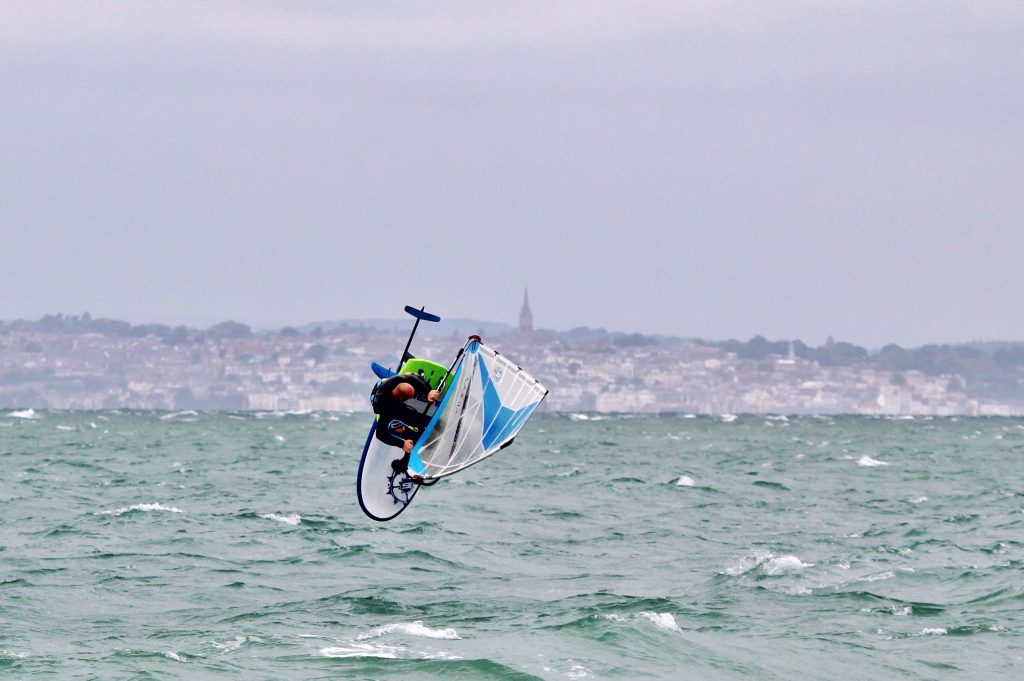
What are the ideal weather conditions to get started?
The first mistake people do is to start with too light of a wind, thinking that windfoiling is the perfect weapon to fly in 6 knots. While 6 knots is a real target, it becomes very technical to get flying under 10 knots, especially the pumping part to generate enough power to get started. The best weather conditions to get started is a steady 12-15 knots with flat water. The wind will give you enough speed to lift the board above the water with minimal effort. You will only need to concentrate on your body position and rig angle on the board to control the height.
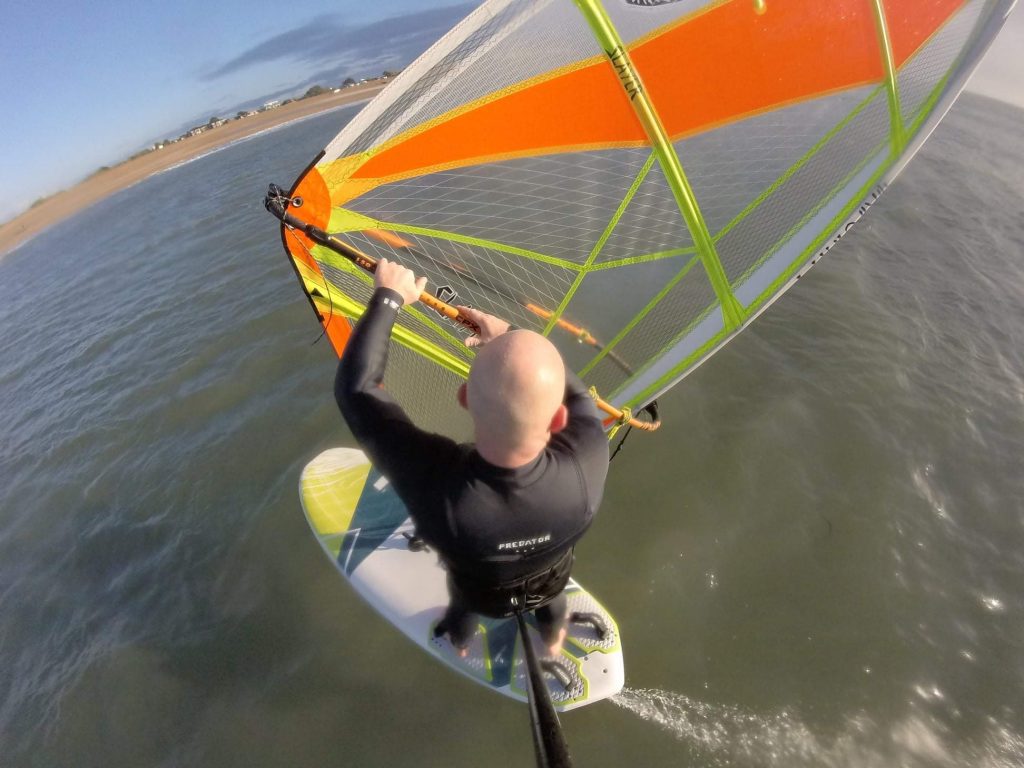
How long time will it take to learn how to fly?
This is of course a difficult question to answer as the learning curve is very individual. Generally speaking an average windsurfer should be able to get flying within the two first hours. After 4-5 sessions you should be able to have relaxed and controlled flights back and forth. The key in managing your first flights is to use your body weight to control the foil. Be light on your feet!
Is foil windsurfing dangerous?
Foil windsurfing is not a dangerous sport, however, wearing adequate protective gear may prevent you from injuries. A helmet and an impact vest are the bare minimum to protect the head and chest during “catapult-crashes” (these are very frequent when you learn). Wearing a wetsuit and boots is also recommended, in case you kick the foil while underwater.
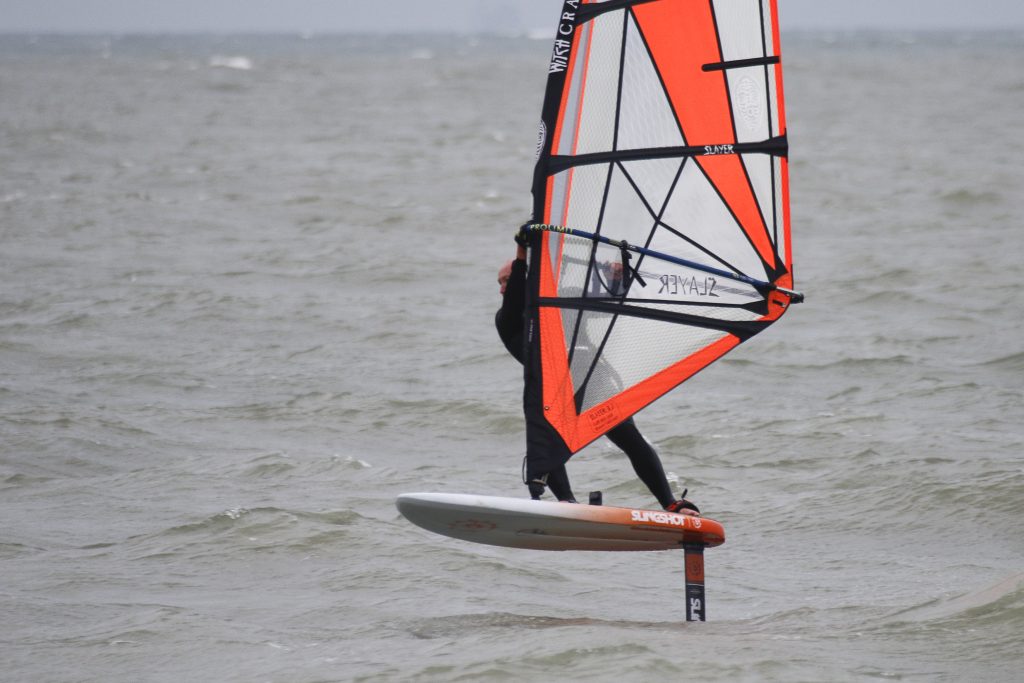
How to choose your foil?
The principle of foiling has been known for a while already: A windfoil is like an underwater glider that allows you to fly over the water. The foil transmits a hydrodynamic lift force to the board capable of pushing it out of the water. The goal is of course to reduce drag and increase performance. Today, most brands are using the same shape for their foils, which are composed in 4 distinctive parts: The mast, the fuselage, the front wing and the back wing, aka stabilizer. Knowing the different parts and how size influences the performance of the foil are key to understanding the differences between the brands.
Bigger, lower aspect foils will give riders earlier lift with less effort but be slightly slower. Higher aspect foils will be fast but require more power and/or rider input.
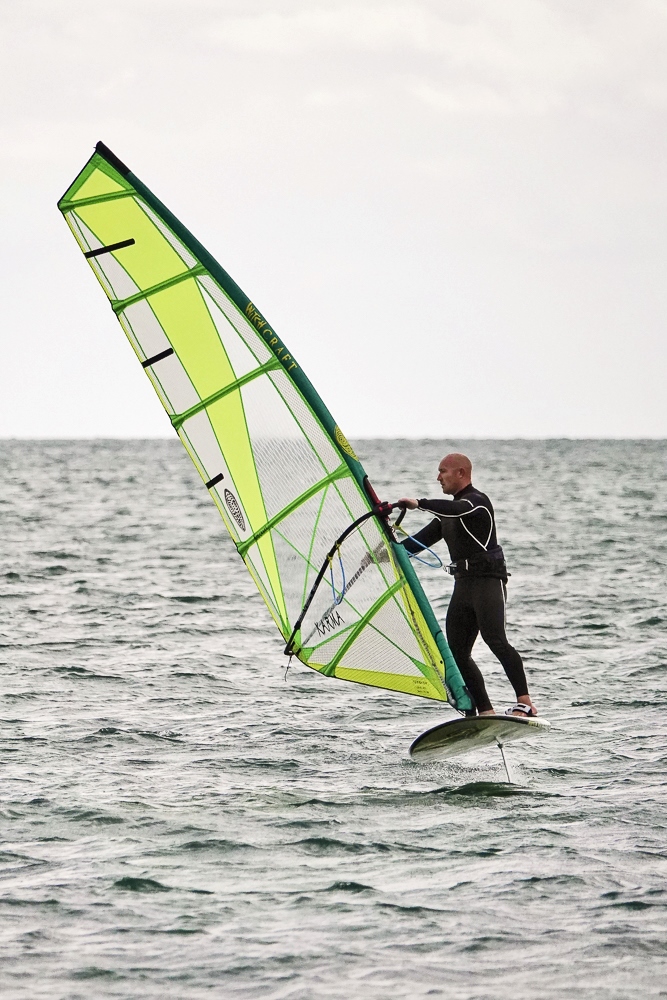
Do I need a specific windfoil board?
The quick answer is no. Many brands have now launched dedicated foil boards with specific features to increase the performance of your rides. However, it is possible to windfoil with a standard freeride board, at least to start with. I personally started with a Starboard 130L, 2003 model. Although I will admit that new 2017 boards designed for foiling are far more efficient and enjoyable. I had a great time on that board and experienced my first flights within half an hour.
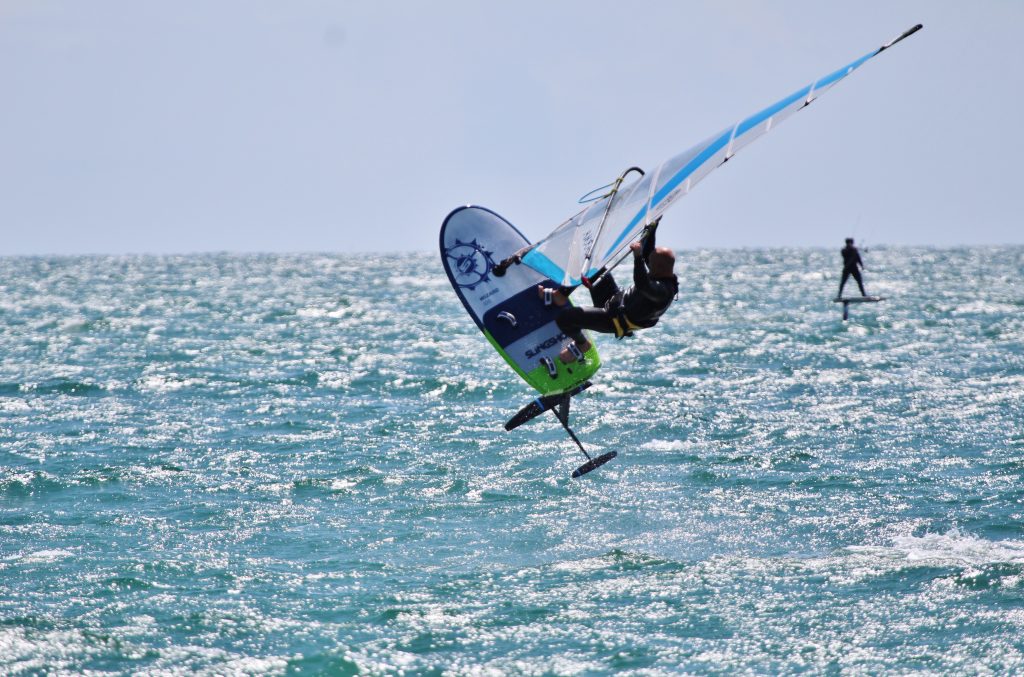
Here are the key features for a great foiling board:
- Deep tuttle fin box: This was the standard for windfoiling Although track boxes are now more common). If you have an old board your fin box may not be strong enough to handle the stress foils put on the board. You just need to try, and eventually reinforce the fin box if it is not strong enough, or invest in a new board.
- Twin US Box foil tacks: Now more of a standard a track mounting system compromises of two equal US (reinforced) boxes running parallel to one another. This allows fine tuning of the foil with riders being able to position their wings exactly how they see fit.
- As short and light as possible and with some volume and width: Having volume in the tail is necessary in order to pump efficiently and get flying quickly. Width helops with stability, especially during light wind uphauling. Generally, big boards offer more control than smaller types, although advanced windfoilers do go smaller for the added manouvrability advantages. It’s also easier to uphaul the rig. (You should indeed avoid waterstarting as you may easily kick the sharp foil and get injured!)
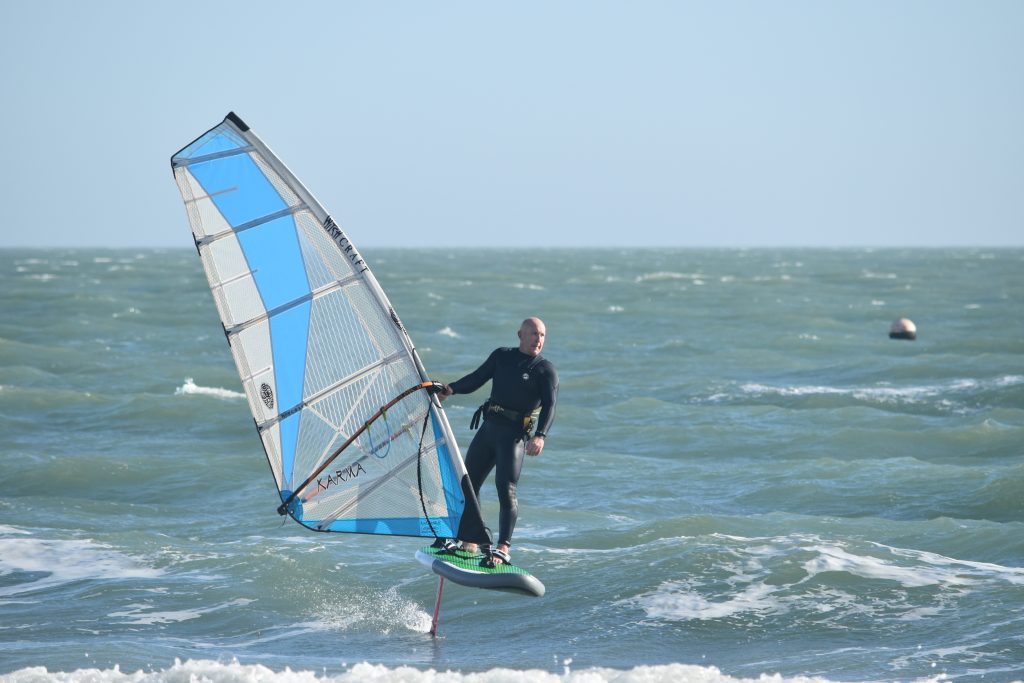
An alternative to windfoil boards are freeride boards that are “foil-ready”. These boards are regular freeride boards but with windfoiling features such as:
- Small and wide (about 250 cm x 75 cm)
- Lots of volume
- Particularly wide at the back of the board
- Ideal footstrap position for windfoiling (As your body position is more upright than in regular windsurfing, you will need to position your feet more centered on the board.)
- Reinforced deep tuttle fin box
What about the sail?
Basically, you can get flying with any kind of sail. It will work as long as you can generate enough power to get the foil to push your board up and out of the water. However, some brands like Loftsails and Horue have developed specific sails for windfoiling. The idea of these sails is to get flying as quickly as possible, with lots of power generated by an effective pumping, and to make the flight comfortable by improving the stability through gusts and lulls.
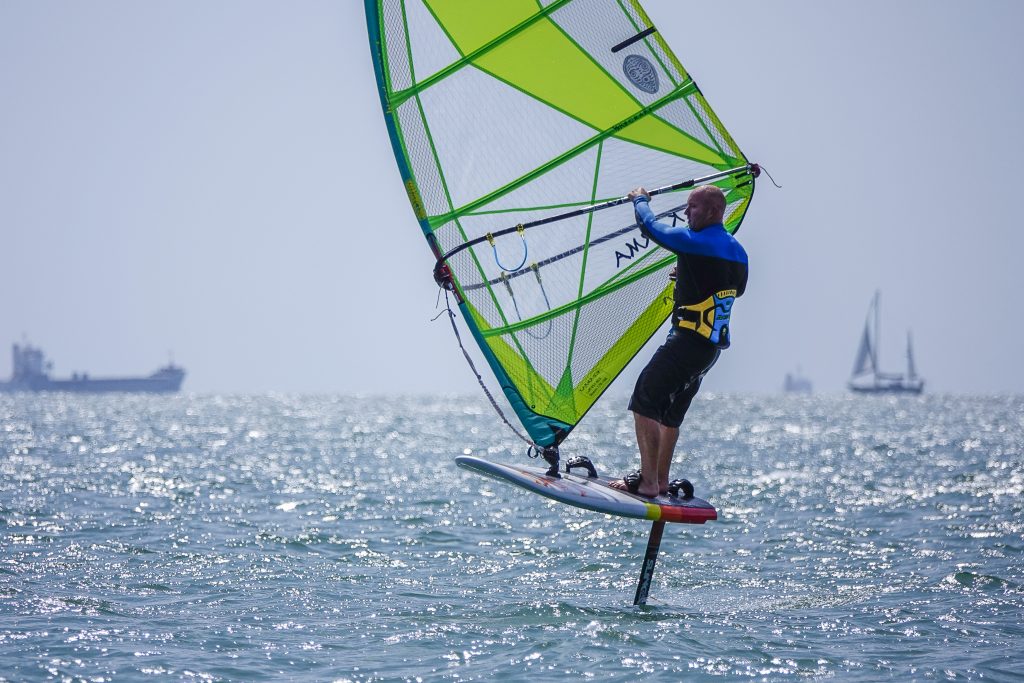
We would recommend getting started in windfoiling with a relatively small sail (5m-6m) and a steady 15 knots. It will feel lighter and more maneuverable than a 9m, which will help you to learn quicker. As a rule of thumb, if there is enough wind to waterstart, you will feel overpowered on the foil and you should switch to a smaller size. The right size should be about 2 square meters less than what you would usually use with a regular funboard.
Wingfoiling/wingsurfing?
Of late there’s a new windy, foiling related discipline up for grabs should riders not want to go down the route of flying above water with windsurf kit. Wingsurfing, or wing foiling, utilises an inflatable wing that’s free moving and not attached to the board. It’s a slightly different feel and set of technical skills riders need to master but still pretty similar to windsurfing/windfoiling.
Those into wing foiling suggest it’s an easier discipline to get into compared to windfoiling. The wing is much lighter, being filled only with air, and set up/pack down is more efficient. Plus, being able to flag the wing when wave riding (whatever the wind strength and direction) is very attractive).
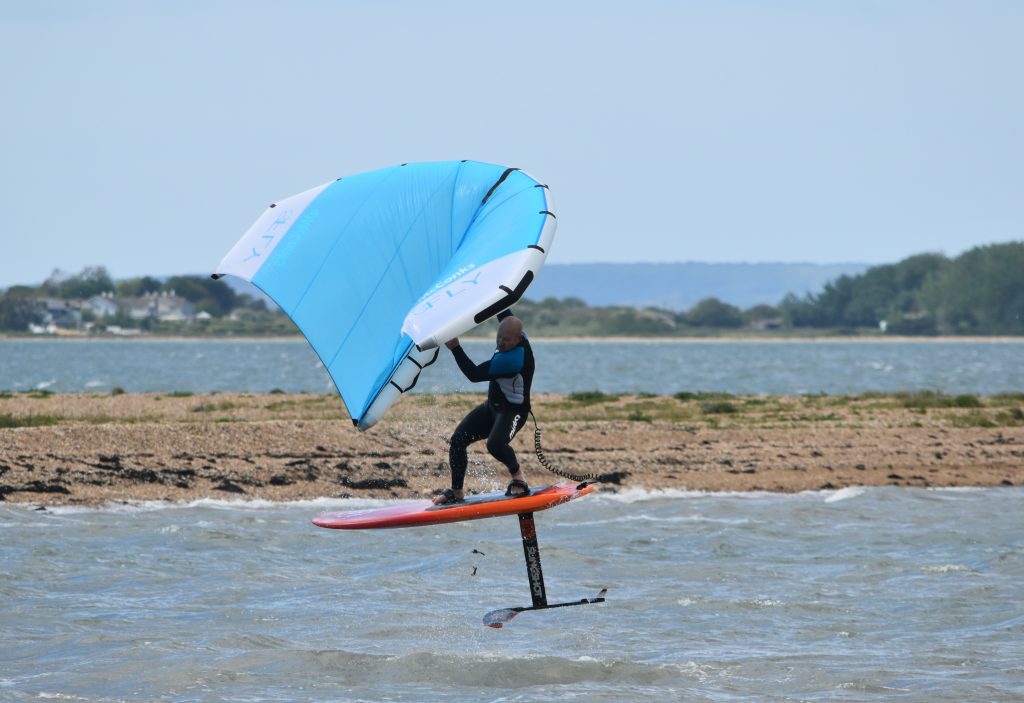
There’s no question wingsurfing is a fun activity. But trying to compare windsurf foiling and wingfoiling is like putting apples and pears side by side. Our suggestions is do both, then you get the best of the two worlds and 100% maximise your time on the water!

READY TO FLY!
We hope our advice will give you the right start in discovering an amazing new level of windsurfing. Whatever you are searching for in the foiling world, we have it all in one, easy place – check out foilshop.co.uk to get other tips and tricks to improve your windfoil skills!
And there’s even more over on the Windfoil UK page –
http://www.windsurfingukmag.co.uk/category/windfoil-uk/
Alternatively, if it’s wingsurfing/wingfoiling that’s your bag hit the following link –
http://www.windsurfingukmag.co.uk/category/wingsurfing-foiling-uk/

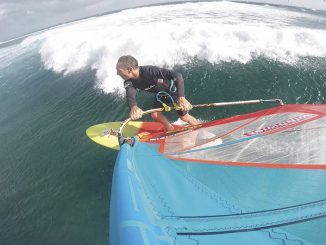
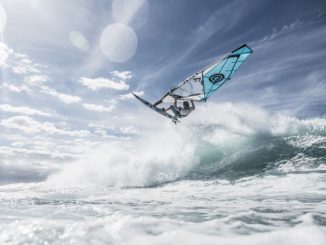
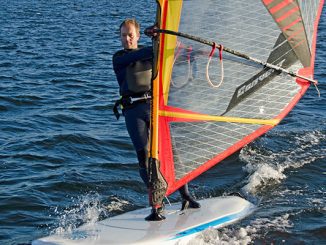
Hi.. I have 2017JP Superlightwind.. it has a deep Tuttle. Would this be a suitable board to try learning with?
Thanks
Hi David. For sure the board you have will work. Obviously, it hasn’t got a reinforced foil box, so you’d need to be careful. But in theory there’s no reason your JP wouldn’t work. It’s quite similar to the JP Hydrofoil. Let us know how you get on.
I have a jp superlightwind 2015 pro. I use a rrd wh85 flight V2 alu foil and a 9.0m GA sails cosmic. Super combo for foiling under 10knots.
To Tez Plavenieks I read your very good write up on the Gong 6ft 9 Zuma. I weigh 75kgs so as a beginner in wing foiling would I be better off with the 6ft 6 Zuma. I can windfoil ok.
Is winging more fun than windfoiling which I really enjoy . I am 70 so would I be better off sticking to what I already know.
Look forward to your reply
Hey Ian. Have responded via email. Thx.